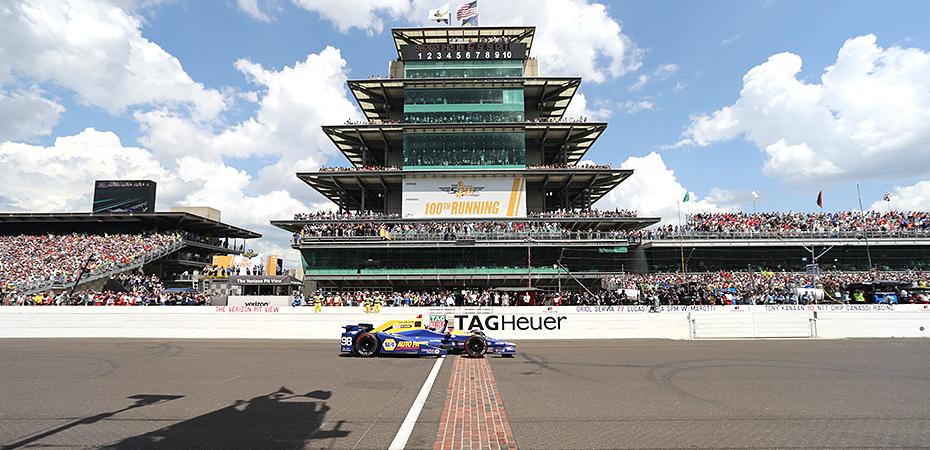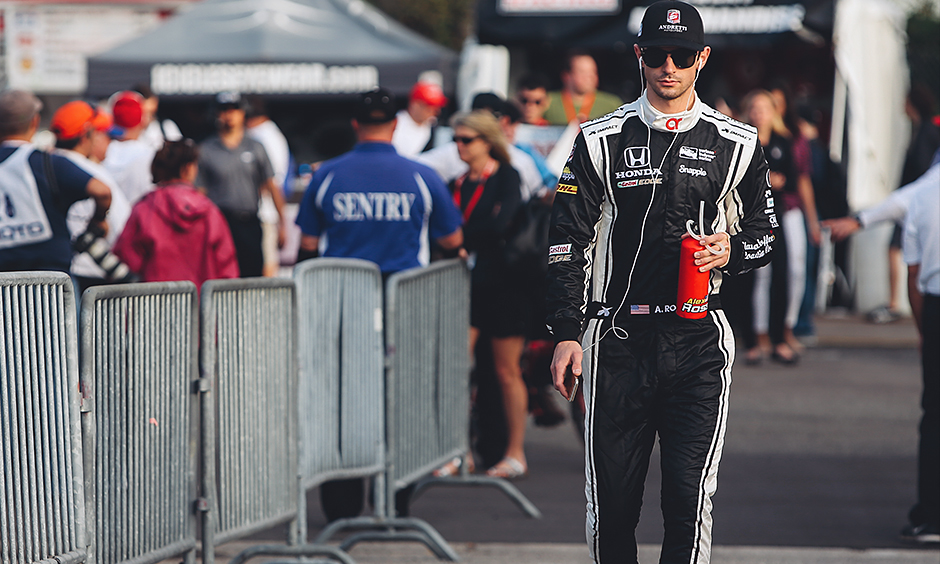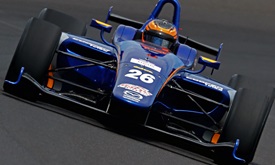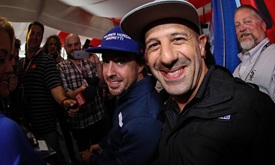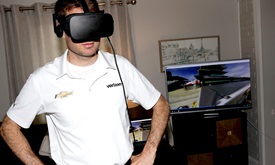Alexander Rossi's improbable journey to 2016 Indianapolis 500 champion
MAY 25, 2017
You’ve seen the headlines. You know the story. If you stood in the Indianapolis Motor Speedway grandstands 12 months ago, you saw him cross the line. You know how this one ends.
A year ago over the hallowed “yard of bricks,” one of the unlikeliest outcomes in the history of the Indianapolis 500 Mile Race unfolded in front of the disbelieving eyes of the world as Californian rookie Alexander Rossi overturned the most impossible odds to take victory in the 100th running of the race. But this isn’t just a story of an audacious strategy call. It’s not just the fact he ran longer on one tank of ethanol than anyone believed possible. Nor that he did so as a rookie and the first American to win in his debut since Louis Meyer in 1928.
Alexander Rossi’s story is far more improbable than that.
You see, three months before the 2016 Indianapolis 500, Alexander Rossi didn’t have a drive. In anything. He hadn’t raced in a U.S. series in eight years. He’d never been to an INDYCAR paddock and he’d never even seen an oval firsthand.
Rossi grew up fascinated by the allure of Formula One. That was his life’s goal and his one true aim. Leaving behind friends and family, growing up alone and away from home in Europe, the young racer had to mature and man up fast.
He won at every level, becoming widely respected in a racing world where Americans are the rarest of breeds. He fought his way past every obstacle and ultimately achieved his dream of racing in the self-proclaimed highest echelon of global open-wheel racing in 2015. Yet such is the cruel hand of fate that, just months after making his debut, he was to have it all snatched away when money and politics spoke louder than talent and potential. Alexander Rossi was without an F1 ride.
Unknown to him, America had been watching all along. A phone call from Michael Andretti led to a meeting and an offer of a seat in Bryan Herta’s satellite team that was merging with Andretti Autosport in the Verizon IndyCar Series.
“My dad (Pieter) and I asked (questions) for 20 minutes and literally decided then and there in the Andretti conference room,” Rossi laughs when recalling the meeting. “We’d come on a whim, flown to Indianapolis and right there we signed a deal to race in a championship we knew nothing about. We would have just two days of testing and then we were racing.”
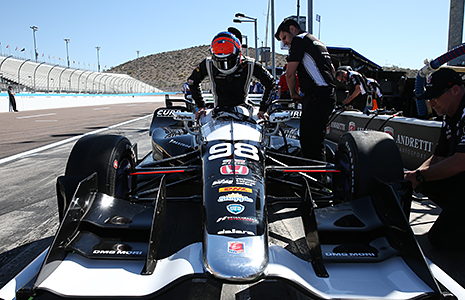 The first challenge for Rossi was getting used to the cars. Rossi had been racing F1 machinery that used a 1.6-liter, V-6 turbo hybrid engine with the cars weighing in at around 1,500 pounds. In the Verizon IndyCar Series, Rossi would have a 2.2-liter, V-6 twin-turbocharger powering a car that weighed 100 pounds more. He’d need to adapt his technique to suit it.
The first challenge for Rossi was getting used to the cars. Rossi had been racing F1 machinery that used a 1.6-liter, V-6 turbo hybrid engine with the cars weighing in at around 1,500 pounds. In the Verizon IndyCar Series, Rossi would have a 2.2-liter, V-6 twin-turbocharger powering a car that weighed 100 pounds more. He’d need to adapt his technique to suit it.
“In Europe, it’s all about getting your car straight on (corner) entry and exit and being very precise,” he explained. “In INDYCAR, it’s literally however fast you are comfortable firing a car into the corner and then just holding on. It’s about using an ungodly amount of downforce in the middle of the corner to get lap time.”
While Rossi at least had reference points at road and street courses, he’d never so much as stepped onto an oval in his life. First up was Phoenix Raceway (at right) in the second race of the season at the beginning of April 2016.
“That place is a terrifying little monster from hell,” Rossi grins but not joking. “The car doesn’t want to do it and the amount of corrections you have to make are just insane. You qualify (two laps) in 35 seconds and you’re just holding your breath for the whole thing.
“But even there, you’re running road-course wings and the cars are still generating quite a bit of downforce, so it’s completely irrelevant in terms of your understanding of a track like Indianapolis. That was the biggest question mark coming into the month of May. I had no idea what to expect and what lapping consistently at over 230mph with little to no downforce was going to feel like.”
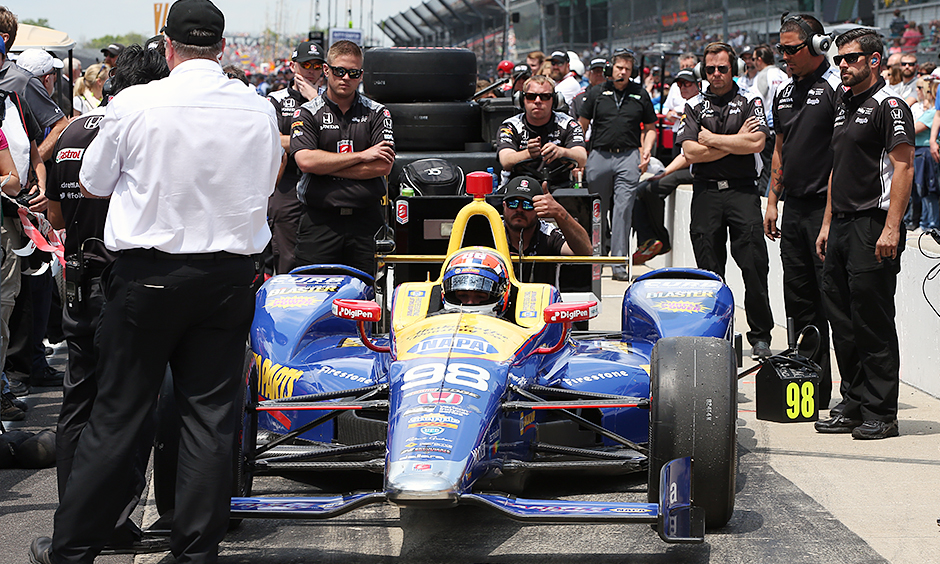
Little more than two months removed from making the leap to Verizon IndyCar Series racing, Alexander Rossi was staring at the prospect of taking on the most fickle of racetracks, the hallowed Indianapolis Motor Speedway.
True, he’d survived his first oval a month earlier, finishing 14th at Phoenix Raceway even though he tapped the wall late in the race to bring out the last caution flag. But the mile track at Phoenix is nothing like the cavernous 2.5-mile Indy oval, with its daunting squared turns.
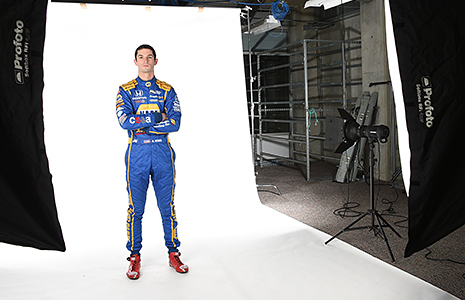 As with all Indianapolis 500 first-timers, Rossi had to go through rookie orientation to pass the requisite speed challenges and be permitted to race in the 100th Indianapolis 500 presented by PennGrade Motor Oil. Rossi had never experienced a sensation like it.
As with all Indianapolis 500 first-timers, Rossi had to go through rookie orientation to pass the requisite speed challenges and be permitted to race in the 100th Indianapolis 500 presented by PennGrade Motor Oil. Rossi had never experienced a sensation like it.
“When you get to the speedway, you take away all that downforce and all of a sudden you feel like you’re on a 650-horsepower skateboard where one gust of wind will push the car halfway across the track,” Rossi said. “The margin for error is so small. If you have understeer, you’re heading into the wall at 220 mph. If you have oversteer, you’re spinning and it’s over. There’s the thinnest line that you’re trying to balance on, all the while driving absolutely on the limit.
“I didn’t find that groove immediately,” he admitted. “I went out and the first speed you have to do is 185, which was super easy. Then it was 200, which was pretty easy. The next target was 215-plus for the final stage to get your qualification, and it was diabolical.
“And so I came in (to the pits) and I hadn’t graduated yet because I hadn’t done 15 laps over 215, and I was like, ‘I’m either not capable of doing this or there is something wrong.’”
A quick trip to the garage and the No. 98 Andretti Herta Autosport with Curb-Agajanian Honda was put on the setup pad. A quick change to reduce the amount of rear toe and the rookie was sent back out. Fifteen laps at 228 mph. Orientation complete.
“For sure that gave me confidence,” Rossi said.
But speed is only part of the puzzle at Indianapolis. The art of pack racing was new to Rossi as well.
“Andretti makes a point each day of practicing group running, at least a whole hour a day just running in traffic. By the third day, I still couldn’t pass people. My car was going to hell. So I asked Townsend Bell (who was driving a fifth Andretti Autosport entry in the 2016 race) for some advice. He looked at me and he just said, ‘It’s not supposed to feel right, it’s supposed to be primal. None of us are comfortable, you just have to accept it and deal with it.’
“Once I had the information that everyone else was struggling, I was fine with it and figured out how to start passing.”
With his pace and pack mentality honed, he had to qualify for the race. Fastest in practice the morning of first-day qualifying, Rossi put a marker down with his first qualifying run and sat, happily, on his time. Remaining in the top three positions for most of the day, as the sun started to set and the track started to cool, the lap times started to drop. Rossi, who felt he could have been second or third on the day, was out of the fast nine who advanced to the pole shootout the following day. He was P11.
“Missing out on the fast nine actually worked out OK,” he concedes. “We were suffering with an engine which was dying a bit of a death. So even if we’d got through, we’d have been ninth at best. It almost worked out better that I was 11th.”
And so to race day, one of the most fevered and expectant days in all of motor racing. The pomp and ceremony around the Indianapolis 500 makes it so emotional as to be an almost spiritual event. Yet Rossi remained calm.
“A lot of my lead-up to that Sunday at noon was framed by naivete because I didn’t know what it was about and what 350,000 people (in the stands) and that grid was going to be like. Because of that, it was very much just another race for me. We were four races into the season and I was hungry for a result.”
When it comes down to it, Rossi is a racer. And after the many weeks of build-up, deep down he simply wanted to feel the close comfort of his race helmet, the belts pulled tight against his chest and his foot resting on the gas.
“Honestly, I was just looking forward to getting into the race car so much. You talk all the time about the 500 and what it’s going to be like and all these media events and blah-blah-blah, and when you finally get into the car to race you’re like, ‘Thank God! We finally get to do this!’”
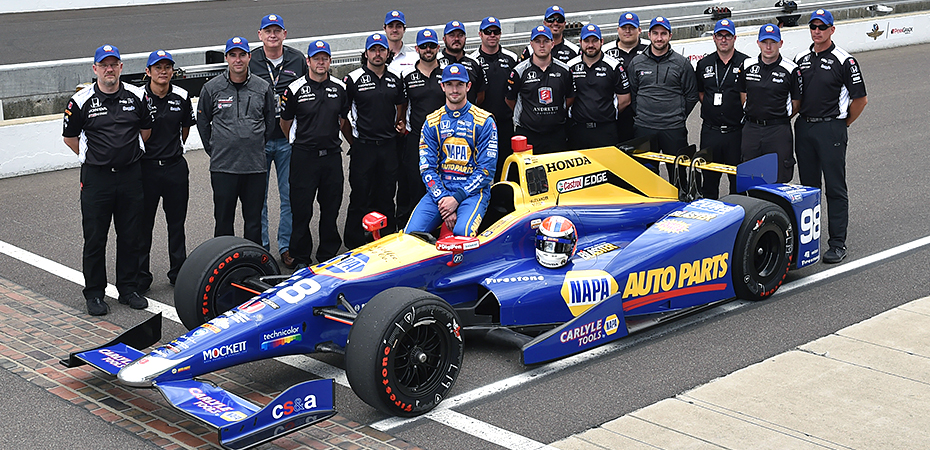
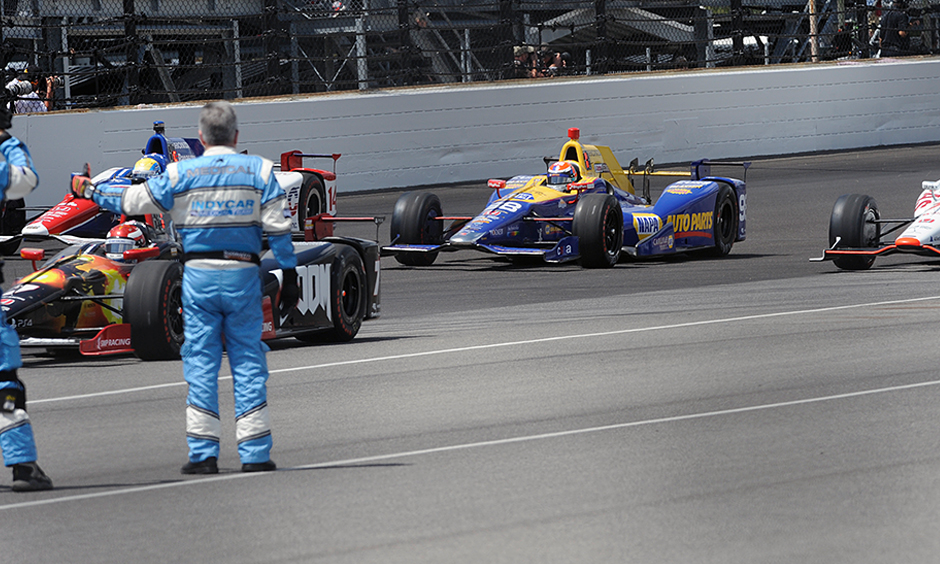
The Andretti Autosport cars had been working well all month at Indianapolis Motor Speedway.
As the 100th Running of the Indianapolis 500 presented by PennGrade Motor Oil got underway, it became immediately obvious that the team would be at the sharp end all day. Townsend Bell and Ryan Hunter-Reay fought for the lead, Carlos Munoz and Marco Andretti were in the mix, and rookie Alexander Rossi settled into the groove.
With his first pit stop out of the way, Rossi started to look comfortable, running consistently in the upper reaches of the field. But on his next two stops, disaster struck as his fuel rig either failed to connect or disconnect. Precious seconds and places in the field ticked away with each agonizingly long stop. With 170 miles completed, Rossi was down to P20.
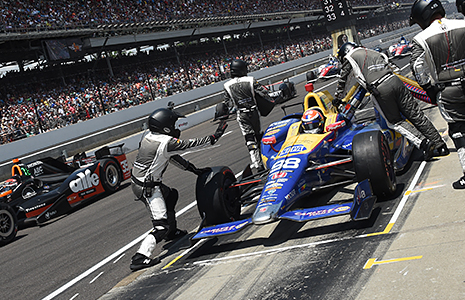 Unperturbed, the Californian put all his learning to use, picking off his rivals and posting what was to be the fastest lap of the race to get himself back up into the top 10. On Lap 96, he pitted for the fourth time after Sage Karam collected the SAFER Barrier, bringing out a caution flag. But another fuel rig issue dropped Rossi to 25th place.
Unperturbed, the Californian put all his learning to use, picking off his rivals and posting what was to be the fastest lap of the race to get himself back up into the top 10. On Lap 96, he pitted for the fourth time after Sage Karam collected the SAFER Barrier, bringing out a caution flag. But another fuel rig issue dropped Rossi to 25th place.
“I’ll be honest, I was on the verge of crying,” Rossi confides. “I had really been putting the car and myself through it to make those places back up. We’d been in dangerous situations a few times just trying to make up for those bad stops, and I wasn’t prepared to keep doing that times four.”
It was at this point that Rossi, team co-owner/race strategist Bryan Herta and Tom German, his experienced engineer, took the biggest risk of their lives. And one that would win them the race.
“We were still under yellow and we were talking about strategy,” Rossi recalls. “We came in to top off (with fuel), just to have the playbook in hand if we wanted to. So we came in to do two splash-and-gos on (Laps) 99 and 101 and just before the restart they gave me a fuel (mileage) number which seemed fine at the time. It was a 4.3 (miles per gallon). Normal running is a 3.9 and I felt like I could do that pretty easy.”
Unbeknownst to the rest of the field, Rossi, now in 29th place and the last driver on the lead lap, would be pitting just twice more. Almost everyone else would be going for three.
Over the next 13 laps, he made up eight positions. But when Mikhail Aleshin hit the wall and Conor Daly collected the Russian, a yellow flag threw a spanner in the works. If Rossi pitted now, he’d be in 21st and on the same strategy as everyone else.
There was only one choice. Roll the dice. Go for broke. Stay out.
At the restart, Alex Tagliani led the field away and Rossi, in second thanks to almost the entire field pitting under caution, fought hard to get past. It was here that fortune began to favor the brave. Under the previous caution, Rossi’s Andretti stablemates Hunter-Reay and Bell had made contact on pit road. Costing them a lap in the process, both were now out of contention for the win over which they’d been fighting all day.
“The team radioed Townsend and said that I needed help,” Rossi said. The veteran driving a one-off with Andretti in the Indy 500 came to his aid by running in front of Rossi, allowing the rookie to ride in his wake and save precious drops of Sunoco E85R ethanol.
“What Townsend actually did was incredible,” Rossi added. “He didn’t just sit in front and tow me around. He did a whole (fuel) stint of qualifying laps. I mean, he was doing huge speeds and I could just sit behind him. I was doing quali laps, in the race, at about 20 percent throttle. That was everything, really.”
Rossi pitted from the lead on Lap 138, picking up last place on the lead lap in P22 when he rejoined. As luck would have it, he came out behind Bell again and the duo continued their slingshot run.
Lap 149 came around and most of the leaders pitted under green. Rossi moved up to eighth. With 37 laps to run, Sato brought out the yellow and Rossi had no option but to stop for fuel and tires. He emerged with farther to run on a full tank than anyone thought possible. Thirty-six laps and 90 miles – nearly 20 miles longer than a typical full stint.
Rossi saw the green flag from ninth place with 33 laps to run, but the team had already been on the radio with dire news of the fuel number he needed to make the finish.
“When Bryan told me I had to hit a 4.7, I was just, ‘What?!’ A 4.3 was a big ask on what was traditional, so to go another four points on that just seemed too much. I said no way could I do that. I honestly thought they were kidding me. But then it became a little personal challenge, a vendetta of mine. I set myself the goal of figuring it out. I just started experimenting, trying anything to get the number up.
“At this point I was behind Scott Dixon, who was trying the same thing. I knew that the pace was fine as he’s a good benchmark and that I could just play around. I was just trying to create something out of nothing and, after nine or 10 laps, I hit a 4.7. After that, I just kept repeating it.
“With about 15 (laps) to go, Ryan (Hunter-Reay) came up behind me and I radioed in and told the team to send him past me so I could latch onto the back of him. But differently to when Townsend had punched in the fast laps, I needed Ryan to run slow to keep at my pace but also give me a tow.
“He was literally driving the whole track in his mirrors, just setting his distance based on my speed. It got to the point where he had to cut the rope and go because he was almost having to brake to stay with me. He committed fully to helping us get to the end, he really did.”
But even with Rossi hitting a fuel mileage number that had seemed impossible, the best math had him running out on Lap 199 of 200.
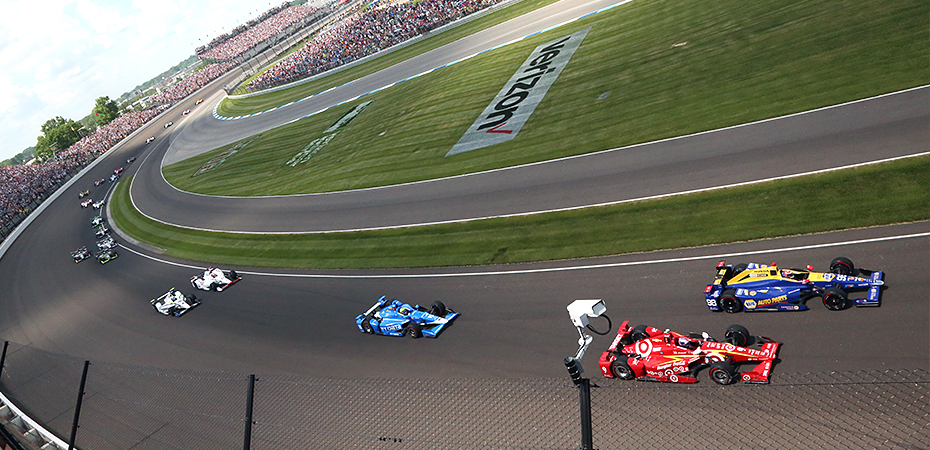
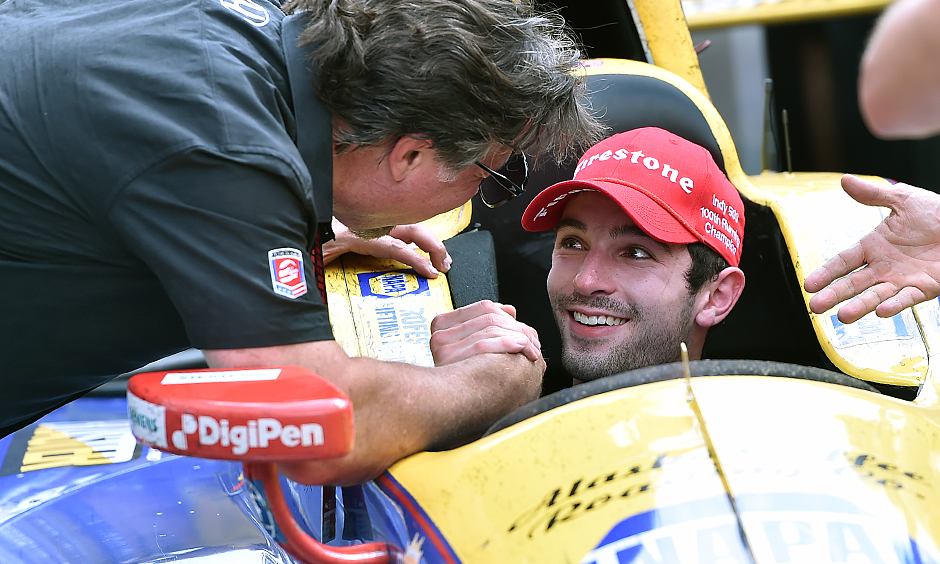
After refueling problems earlier in the 100th Running of the Indianapolis 500 presented by PennGrade Motor Oil forced Alexander Rossi into an alternate fuel-saving strategy, the Verizon IndyCar Series rookie circled the 2.5-mile Indianapolis Motor Speedway oval as conservatively as possible – trying to achieve what he thought was an impossible fuel-mileage target to complete the final 36 laps without a pit stop. Or worse, running out of fuel on track.
On hit pit stand, Rossi’s braintrust led by team co-owner/race strategist Bryan Herta calculated that he would run out with a lap to go, but they pushed on and the No. 98 NAPA Auto Parts/Curb Honda slowly climbed higher up the scoring pylon as the other front-runners were forced to peel off for a late splash-and-go.
With three laps to go, Andretti Autosport teammate Carlos Munoz pitted from P1. Alexander Rossi was leading the Indianapolis 500. On fumes.
“I was expecting to run out on (Lap) 197 or 198. That was my own math,” Rossi said. “I didn’t know what the team had calculated.
“When Carlos pitted, Bryan came on the radio and told me I was P1, but it didn’t register. I was having to be so thoughtful and mindful of the fuel and not screwing up, that I just didn’t hear him. The thing you have to realize is that, at Indy, it is harder to drive slow than to drive fast because at low speed you don’t have the downforce. The car becomes completely unstable and you start fighting it. My mental capacity was one corner at a time, making sure I didn’t do anything stupid, making sure I didn’t throw it all away, while still keeping that fuel number.”
Somehow, Rossi saw the white flag signaling a final lap. Just 2.5 of the longest miles he’d ever endure remained. Through Turn 1 the team saw his fuel pressure starting to drop from data received on the pit stand. Out of Turn 2, the driver felt the engine cutting out. “Full throttle!” was the passionate call from Herta on the radio. Rossi took the car to 205 mph. At Turn 4, the engine died, dry of Sunoco E85R ethanol.
“That’s when the nerves hit,” Rossi exhales. “Sitting there (coasting to the finish), waiting for someone to fly past.”
 But they didn’t. The checkers flew for Rossi first. He’d done it.
But they didn’t. The checkers flew for Rossi first. He’d done it.
“You want to know what the very, very first thing was in my head?” he asked. “Honestly, I was just so pumped I’d made a fuel number which I didn’t think was possible. My ego went through the roof. I was like, I am the (best) at saving fuel!
“But then the most amazing thing happened. Because the engine was off, I had this incredible and unique experience. As I got to Turn 1, I realized I could hear everyone (cheering in the stands). I heard the whole place erupt. How many race winners, let alone Indy 500 winners, get to experience that? And it just hit me, all of it. It was overwhelming.”
From there, it was and remains a blur.
“If you watch the post-race (ceremonies), you’ll see I have no clue what is going on,” he admits. “You pull in and there’s like 100 people and you’re trying to figure out which one is the person telling you where to go. I had no clue. I didn’t even know how to put (the victory) wreath on. I didn’t know what to do with the milk. I knew absolutely nothing. In the end my PR rep ended up standing behind the cameras with a scratch pad writing instructions for me with a Sharpie. I don’t remember much of it, to be honest.
“All I really remember is seeing my dad (Pieter). I saw the emotion in him and it all came home. The journey we’d been on. And the ultimate validation that this was so right. This was where we were meant to be.”
For Alexander Rossi, the decision to leave behind everything to which he had dedicated his racing life in Europe was a massive and potentially disastrous call. And yet, on the biggest stage possible, it had proven itself to be the best move he’d ever made.
“It changed the direction of my career, no question,” Rossi says. “Even before the month of May, I was starting to really enjoy INDYCAR and what it was all about, just going to racetracks and driving as hard as I could. How welcomed I’d been into the series and into Andretti and how, despite my lack of knowledge and, frankly, appreciation of everything due to the fact I’d just never even been to an INDYCAR race before, Andretti just literally from drivers, engineers, executives and everyone got me up to speed and helped me. That was an amazing experience.
“The fact we won the 500 gave me an opportunity to stay here, to stay with Andretti and Honda and to strengthen all these amazing relationships we’ve made.”
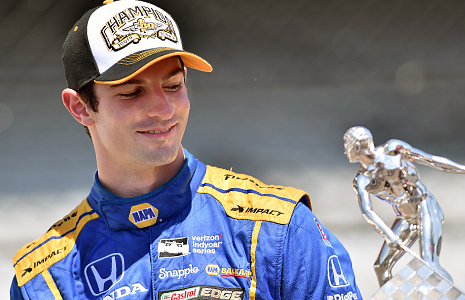 Now, 25-year-old American returns as the reigning Indianapolis 500 champion for Sunday’s 101st running. His face now cast in sterling silver and adorning the Borg-Warner Trophy, how will this year differ to his first experience?
Now, 25-year-old American returns as the reigning Indianapolis 500 champion for Sunday’s 101st running. His face now cast in sterling silver and adorning the Borg-Warner Trophy, how will this year differ to his first experience?
“In some ways, I want it to be different and in some ways, I don’t.
“I’m looking forward to the lead-up. I know what the race means now and I know why we do all the media. I understand the place that the race holds for the city of Indianapolis, for INDYCAR and for American motorsports. But at the same time, I think the fact that I always treated it like any other race ended up being an advantage and is something I will try to do again.”
But what of that secret? The way to make that incredible fuel number of 3.9 miles per gallon into a 4.7? Will he now share it?
“No I won’t!” he laughs. “The only frustrating thing is that my engineer (Tom German) already moved teams (to Rahal Letterman Lanigan Racing), so the secret is probably out. Plus, Ganassi (with its four cars) now have Honda engines so they probably know, too. But having lived it, I can tell you, it’s one thing to have the theory, but it’s quite another being able to put it into practice.”
Alexander Rossi never expected to be racing Indy cars. Now he returns to “The Greatest Spectacle in Racing” as the Indianapolis 500 champion. Its 100th, his name etched into racing history forever. At the beginning of a new life which brought this Californian home.
To race. To win. To stay.
